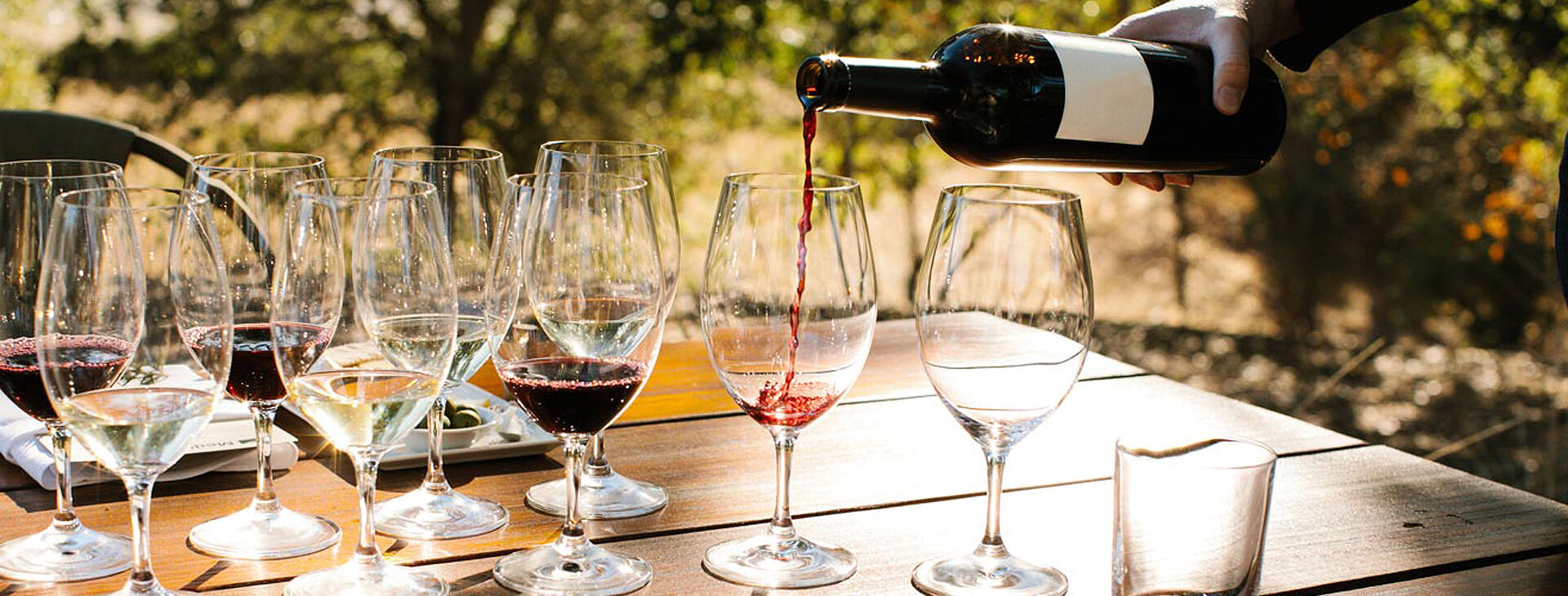- Global (English)
- Compare

The Golden Rules of Serving Wine
Whether you're a seasoned wine enthusiast or just starting to explore the vast realm of wines, mastering the art of serving wine can elevate your tasting experience to new heights. Here are some golden rules to follow when serving wine, including sparkling wine and champagne, along with additional accessories and fascinating traditions from around the world:
Set the perfect temperature
Storing wine and champagne at their ideal temperature is crucial as it preserves their quality, taste, and unique characteristics. Temperature fluctuations can accelerate aging or dampen flavors, affecting the overall enjoyment of these exquisite beverages.
The recommended temperature settings:
White wines: Serve between 45°F to 55°F (7°C to 13°C). Crisp whites are best served colder, while fuller-bodied ones are better slightly warmer.
Red wines: Aim for a range of 55°F to 65°F (13°C to 18°C). Lighter reds benefit from cooler temperatures, while bolder reds thrive closer to the warmer end of the spectrum.
Sparkling wine and champagne: Ideally, serve at a temperature between 38°F to 45°F (3°C to 7°C). Keeping them colder preserves their effervescence and enhances their refreshing qualities.
Did you know? Dunavox offers the widest selection of premium wine coolers in Europe. We offer not just wine, but champagne fridges as well. Also, our double-zone models let you set two different temperatures for your red and white wines and store them separately withing one cooler. So you can serve them both at their perfect temperature.
Choose the right glassware
The importance of using the proper glassware for serving different types of wines lies in enhancing the overall tasting experience. Each wine variety possesses unique characteristics, from complex aromas to delicate flavors, which can be fully appreciated when served in the right glass.
The recommended glassware are:
Red wine glasses: Larger with a rounder bowl to allow for aeration.
White wine glasses: Slightly smaller to maintain the wine's cooler temperature.
Sparkling wine and champagne glasses: Flute-shaped glasses or tulip-shaped coupes. The narrow design preserves the bubbles and encourages their ascent.
Hold the bottle right: When serving sparkling wine and champagne, treat the bottle with extra care due to the presence of carbonation. Hold the bottle by the base or the punt to minimize shaking, preserving the effervescence and preventing unwanted spills.
Decanting with deliberation: For sparkling wines and champagne, decanting is generally not necessary. However, if you prefer a softer effervescence, you can gently pour them into a decanter and allow them to breathe for a short while before serving.
Opening the bottles: When opening sparkling wine and champagne, hold the cork firmly while turning the bottle. Gradually release the cork with a gentle twist to avoid the loud popping sound, preserving the wine's bubbles and preventing accidents.
Serving with style: When pouring sparkling wine and champagne, tilt the glass and pour along the side to minimize bubble loss. Fill the glass to about two-thirds full to leave room for the bubbles to rise and appreciate the wine's effervescence fully.
Additional accessories to take your wine tasting events to new hights:
Wine stoppers: Preserve leftover wine for future enjoyment, maintaining its flavor and quality.
Wine pourers and aerators: Enhance the wine's aeration and improve its taste when pouring.
Wine thermometer: Accurately measure the wine's temperature, ensuring the perfect serving conditions.
Wine charms: Fun and practical accessories to help guests identify their glasses during gatherings.
Did you know?
Here are some interesting wine traditions to impress your friends with at your next gathering serving delicious wines:
Sabrage (France): Opening a bottle of champagne with a saber, a tradition often performed to celebrate special occasions.
Wine Blessing (Italy): A tradition in which wine is blessed during religious ceremonies, symbolizing the sacredness of the drink.
Stomping of the Grapes (Various Cultures): A celebratory tradition of crushing grapes with bare feet during the wine-making process.
By following these golden rules you can create memorable moments with friends and loved ones. Remember, wine is not just a beverage; it's a bridge that connects cultures, history, and shared experiences across the globe. Cheers!